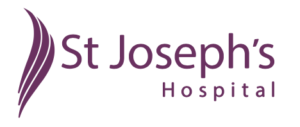Patient Information
Arthroscopic Acromioclavicular Joint Reconstruction
What are the aims of surgery?
Acromioclavicular joint reconstruction aims to address symptoms of pain and instability following an acromioclavicular joint dislocation in order to restore shoulder function and relieve pain and discomfort. Early surgery aims to allow the ligaments torn during the dislocation to heal in shortened position. Late reconstruction can be performed using either synthetic materials or tendon grafts. Many cases can be performed arthroscopically (key hole surgery). If there is a lager amount of damage to the surrounding structures open surgery may be required.
When is surgery required?
The majority of injuries to the acromioclavicular joint (ACJ), which lies between the outer end of the collar bone (clavicle) and part of the the shoulder blade (scapula) called the acromion, are sprains. These normally occur after a fall or tackle where the structures that normally control the joints stability are loaded and partially torn. Most sprains although painful will settle with time, applied ice and physiotherapy to rehabilitate the injured area. If these structures are completely disrupted and the joint is rendered unstable early surgery may be occasionally required particularly In younger patients, particularly those engaged in contact and overhead sports (Rugby, Football, Tennis). In some cases of longstanding instability of the joint reconstructive surgery may be required to restore more normal relationships between the scapula and clavicle.
What structures are damaged in ACJ instability?
The ACJ relies for stability on tough fibres surrounding the joint (capsule) and on two ligaments running between part of the shoulder blade called the coracoid and the clavicle (coronoid and trapezoid). Complete disruption of all three structures will result in instability,
What treatments are available for ACJ instability ?
The appropriate treatment choice is dependant on a number of factors including the degree of instability, how recently the injury occurred, the pattern of structures injured and the anticipated types and levels of activity that the individual wishes to undertake. Most surgeons would agree that with sprains or minor injuries that surgery is inappropriate. Where significant disruption has occurred the options lie between early intervention (preferably within the first 2 weeks) using key hole surgery and a watch and see philosophy to assess the degree of disability caused to the patient by the injury before deciding on reconstructive surgery.
What needs to be done prior to surgery?
The decision to have a subacromial decompression should only be made after thorough discussion with your surgeon. You should be satisfied that you have all the information you require in order to make an informed decision and that you are aware of both the potential risks and benefits of the planned procedure. It is important that you fully disclose any health problems you may have had. Some may interfere with surgery, anaesthesia or aftercare. You should inform your surgeon and anaesthetist of previous allergies or reactions to antibiotics, anaesthetics or other medicines and in particular of any problems with prolonged bleeding or excessive bruising. Anti-inflammatories or other drugs which increase bleeding may need to be stopped prior to surgery. You should stop smoking at least two weeks before surgery as smoking increases the risks of surgery and impairs healing. If you decide to have surgery, your surgeon will ask you to sign a consent form. Read it carefully and raise any questions. It may be necessary for additional procedures to be performed at the time of surgery if the arthroscopic findings vary from the imaging studies. As you may need help with you daily activities after the operation you should make the necessary arrangements prior to surgery.
What does the operation involve?
The arthroscopic surgical technique involves making several (usually 2 small incisions less that 1cm long around the shoulder so that the subacromial space and rotator cuff tendons can be viewed. The procedure is performed using an arthroscope which is a thin instrument attached to a video camera and light source. It allows the operating surgeon to see inside the shoulder joint and perform the procedure while viewing a video monitor. The arthroscope is inserted into the subacromial space. Working through other small incisions, the surgeon uses small instruments to remove inflamed tissues. Small burrs are used to remove any bone spurs that may be pressing on the rotator cuff tendons. The incisions are closed with one or two stitches or small adhesive strips and dressings are applied. Local anaesthetic will usually be injected into the wounds to help with postoperative pain control. After surgery, you will be transferred from the operating theatre to the recovery room where nursing staff will monitor your recovery and administer further pain relief if needed.
What happens after the operation?
Your arm may be in a sling or shoulder immobiliser. This is to protect the shoulder, relieve pain and maintain it in the correct position. You may be able to go home on the day of surgery but occasionally an overnight stay may be required. You will be unable to drive, so should arrange for someone else to drive you home. You will normally have a follow-up visit with your orthopaedic surgeon within the first couple of weeks of surgery. Stitches (if used) are usually removed at this visit.
What rehabilitation is needed?
While the shoulder is healing some pain and discomfort should be expected. You may need to use pain-killers during this period. It may be difficult to perform some day to-day activities for some weeks following the procedure. Your physiotherapist will design an exercise program for you. This is important to your recovery should begin shortly after surgery. It starts with gentle exercises that gradually help you regain shoulder movement. In uncomplicated cases the protective sling can be removed 48 hours after surgery. Your surgeon will advise you about a timescale for return to work and resumption of normal activities. Recovery takes time. It commonly takes take several weeks for strength, comfort and full function of your shoulder to return to normal.
What are the likely outcomes of surgery?
In uncomplicated cases a good outcome in terms of pain relief and improved function can be achieved in around 80% of people.
What complications are associated with the procedure?
As with all surgical procedures there are risks associated with the procedure despite the highest standards of practice. Complications can occur that may have permanent effects. It is not possible to outline every possible side effect or rare complication however, it is important that you have enough information about the possible complications of the procedure to fully weigh up the benefits and risks of surgery.
Possible complications of surgery include wound infection (treatment with antibiotics may be needed, and a second or third operation may be needed to treat the infection). Pain, discomfort or bleeding from around the incisions may occur. Most scars fade and flatten, but some may become “keloid” and remain raised, itchy, thick and red. Further treatment may be needed to try to improve the scarring.
In unusual cases, pain may not resolve over the long term. Persistent stiffness of the shoulder joint may require additional treatment. Injury to nerves close to the surgical area can occur. This may require further surgery.




